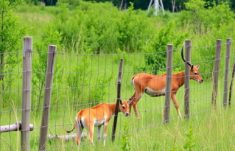Fences for Off-Grid and Rural Living: Your Ultimate Guide to Choosing the Right Barrier
Living off-grid or in a rural area comes with a unique set of challenges and rewards. One of the most important practical considerations is choosing the right fences for off-grid and rural living. Whether you’re trying to keep livestock in, wildlife out, or simply want privacy and security for your property, the type of fence you install is critical. This article will take you through everything you need to know about fences designed for off-grid and rural settings, exploring material options, installation tips, maintenance, and key benefits.
- Why Fences Matter in Off-Grid and Rural Living
- Types of Fences for Off-Grid and Rural Living
- Understanding Barbed Wire Fences
- Electric Fences: Powering Your Protection Off the Grid
- Wooden Post and Rail Fences: A Rustic Charm
- Wire Mesh Fencing for Versatility and Control
- Natural Fences: Living Barriers That Protect and Beautify
- Essential Considerations Before Installing Fences Off-Grid
- Planning Your Fence Layout
- DIY vs. Hiring a Professional
- Maintaining Your Off-Grid Fences
- Enhancing Your Rural Fence with Smart Features
- Environmental and Ethical Considerations for Rural Fencing
Why Fences Matter in Off-Grid and Rural Living

When you think about off-grid living, your mind might wander to solar panels, rainwater catchment systems, or wood-fired stoves. While those are essential tools for self-sufficiency, the role of fences often gets overlooked. Fences are not just about marking boundaries; they serve practical purposes on rural properties that are often several acres in size and adjacent to wildlife or agricultural lands. Here’s why fences are so important:
First, fences provide security. Rural properties can be remote, so a good fence acts as a deterrent to trespassers, whether human or animal. This is particularly important if you keep valuable resources like livestock, crops, or equipment on your land.
Second, fences help manage livestock. If you have animals on your property, fences keep them contained safely in designated areas and protect them from predators.
Third, fences maintain privacy. Even in rural settings, neighbors or passersby might be close by. A well-placed fence marks your space and gives you the serenity you desire.
Finally, fences aid in land management. They help with organizing your property into functional zones, whether for gardening, animals, or recreation.
Types of Fences for Off-Grid and Rural Living
Choosing the right fence depends on several factors including your property size, climate, animals you want to contain or keep out, and your budget. Below is a breakdown of popular fencing options commonly used for off-grid and rural living:
| Fence Type | Best For | Materials | Pros | Cons |
|---|---|---|---|---|
| Barbed Wire Fence | Containing livestock, property boundaries | Steel wire with barbs | Cost-effective, durable, easy to install | Can injure animals, not great for all wildlife, less aesthetic |
| Electric Fence | Livestock control, predator prevention | Wire or tape with electric charger | Highly effective, flexible design | Requires power source and maintenance |
| Wooden Post and Rail | Livestock, aesthetics, property lining | Wood posts and rails | Natural look, strong, long-lasting | Requires upkeep, more expensive |
| Wire Mesh Fence | Keep smaller animals in/out, garden protection | Galvanized steel mesh | Good for controlling smaller wildlife, affordable | Less privacy, can sag over time |
| Natural Fences (Hedges, Thorny Bushes) | Wildlife deterrent, privacy | Plants, shrubs, trees | Environmentally friendly, wildlife habitat | Slow to establish, requires care |
Understanding Barbed Wire Fences
Barbed wire fences have been a staple in rural living for over a century. They are typically the go-to fence for large properties that need a straightforward yet effective boundary. Because they are cheap and relatively easy to install, barbed wire fences are especially popular among off-grid homesteaders.
However, it’s important to consider the welfare of your animals. Barbed wire can cause cuts and injuries, so it’s not always suitable for all livestock, especially smaller or more vulnerable species. In addition, some regions have restrictions on their use, so always check local regulations.
Electric Fences: Powering Your Protection Off the Grid
One challenge of electric fences for off-grid living is the power source. Fortunately, solar-powered electric fence chargers have made this a manageable issue. With solar panels and battery storage, you can maintain an electrified perimeter without relying on the grid.
Electric fences create psychological barriers for animals by delivering a quick, harmless shock if touched. This is highly effective for both keeping animals in and wild animals out. They are also flexible—you can adjust the fencing layout as your needs evolve.
Wooden Post and Rail Fences: A Rustic Charm
If you value aesthetics alongside functionality, wooden post and rail fences are often preferred. These fences blend beautifully into rural landscapes, offering a clean, natural look that complements the environment.
While they require more maintenance — periodic sealing or painting to prevent rot and insect damage — they also last long and are sturdy. They work well for larger animals like horses or cattle but may not be suitable for smaller critters or as a wildlife barrier.
Wire Mesh Fencing for Versatility and Control
Wire mesh fencing is excellent for keeping smaller animals both inside and outside your property. It’s often used to protect vegetable gardens from rabbits, deer, and other wildlife, as well as to contain chickens or smaller livestock like goats.
This fencing type is a reliable barrier but less aesthetically pleasing as a boundary line. Over time, the mesh can sag and will likely require tightening or replacing. The advantage is that it can be installed relatively low to the ground, creating an effective barrier to smaller animals that larger fences won’t stop.
Natural Fences: Living Barriers That Protect and Beautify
For those who want an eco-friendly fence, natural fences such as thick hedges or thorny bushes can serve as wildlife deterrents and privacy screens. These living fences also provide environmental benefits by creating habitats for birds and beneficial insects.
The main downside is that natural fences take years to establish fully, require regular pruning, and might not serve as a reliable containment system for animals. But the payoff comes in beauty, low-maintenance (once established), and environmental impact.
Essential Considerations Before Installing Fences Off-Grid

Before putting up fences for off-grid and rural living, it pays to plan carefully. Here are the key factors to take into account:
- Purpose: Define why you want the fence — livestock containment, wildlife exclusion, privacy, or all three.
- Local Wildlife: Knowing which animals roam your property helps you pick the right fence style and height. Deer require high fences while smaller critters need tight mesh.
- Terrain and Soil Type: Rocky soils or hillsides may necessitate special ground stakes or reinforced posts.
- Material Availability: Being off-grid and rural means you may have limited access to materials. Use what’s available locally if possible.
- Maintenance Capability: Some fences need more upkeep and occasional repairs; choose a fence you can maintain with your resources.
- Budget: Fencing can vary greatly in cost, so balance upfront costs with long-term benefits.
- Local Regulations: Some rural areas have rules about fence height, materials, and placement — always check before starting.
Planning Your Fence Layout
A well-planned fence layout reduces waste and frustration. Start by mapping your property with clear boundary lines and noting any natural features like trees, streams, or slopes. Grouping fencing needs (e.g., garden enclosures, animal pens) can help determine multiple fence types on your property.
Consider installing gates at key points where you enter or exit areas frequently, and ensure you have access paths for vehicles or equipment.
DIY vs. Hiring a Professional
For those living off-grid, DIY fence installation is often appealing and cost-saving. Many fencing types, such as barbed wire and mesh fences, can be installed with basic tools and some research. Online tutorials and community forums make learning easier than ever.
However, if your terrain is difficult or you want a more elaborate fence (like a wooden post and rail with gates), hiring a professional might be best to ensure your investment lasts.
Maintaining Your Off-Grid Fences

Once your fence is in place, ongoing maintenance is key to keeping it functional, especially in rural environments where weather and wildlife can take a toll.
| Fence Type | Common Issues | Maintenance Tips |
|---|---|---|
| Barbed Wire | Wire sagging, rust | Tighten wires regularly, use galvanized wire to resist rust |
| Electric Fence | Battery drain, wire breaks | Check energy source and connections often, replace worn wires |
| Wooden Post and Rail | Wood rot, insect damage, broken rails | Seal or paint wood annually, replace damaged pieces promptly |
| Wire Mesh | Mesh sagging, holes from animals | Tighten mesh yearly, repair or replace holes quickly |
| Natural Fences | Overgrowth, damage from animals | Regular pruning, replacement of dead plants |
Routine fence inspections, especially after storms or harsh weather, will help catch problems early before they become expensive repairs.
Enhancing Your Rural Fence with Smart Features
Off-grid technology advancements have also reached the fencing world. Here are some smart enhancements you might consider:
- Solar-Powered Electric Chargers: Keeps your electric fence active without grid power.
- Motion-Activated Lights: Deterrents for nighttime intruders or critters.
- Wireless Gate Openers: Convenience for accessing remote gates.
- Surveillance Cameras: Adds an extra layer of security.
Integrating these features can increase the effectiveness of your fences without compromising your off-grid independence.
Environmental and Ethical Considerations for Rural Fencing
When installing fences in rural areas, it’s vital to respect the environment and wildlife. Fencing can disrupt animal migration and local ecosystems if not planned carefully. Here are some tips to minimize impact:
- Avoid fencing across natural wildlife corridors whenever possible.
- Use wildlife-friendly fence designs, such as spaced rails or smooth wires.
- Maintain gaps at ground level for small animal passage to prevent injury.
- Opt for biodegradable or recycled materials to reduce environmental footprint.
Ensuring your fencing contributes positively to your land’s ecology is part of living ethically off-grid.
Conclusion
Fences for off-grid and rural living are more than just boundary markers — they are essential tools for security, livestock management, privacy, and land stewardship. Choosing the right type of fence depends on your unique circumstances, animals, terrain, and personal preferences. From traditional barbed wire and sturdy wooden posts to modern electric fences powered by solar energy, the options abound. Careful planning, considerate installation, and regular maintenance will ensure your fence stands the test of time while coexisting harmoniously with the natural environment. Whether you’re protecting your homestead, managing animals, or simply carving out your peaceful corner of the world, the right fence can make all the difference in your off-grid and rural lifestyle.







